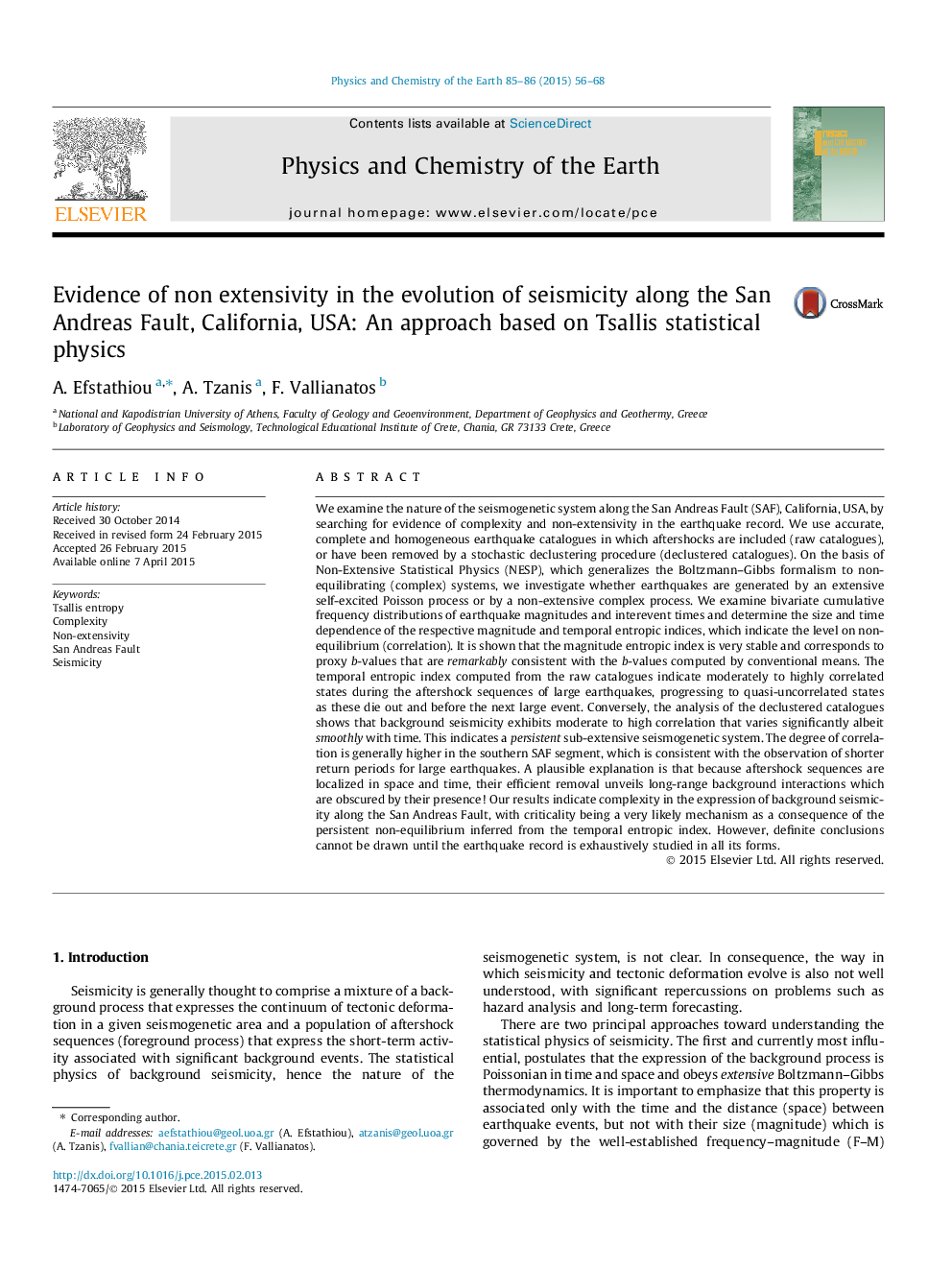| Article ID | Journal | Published Year | Pages | File Type |
|---|---|---|---|---|
| 4720930 | Physics and Chemistry of the Earth, Parts A/B/C | 2015 | 13 Pages |
•The nature of seismogenesis along the San Andreas Fault (SAF) is examined.•Bivariate frequency distributions of magnitudes and interevent times are studied.•Hypotheses of Extensive vs. Non-Extensive statistical physics behavior are tested.•A persistent sub-extensive (complex) seismogenetic system along SAF is indicated.•Strong evidence of complexity in background seismicity along SAF are found.
We examine the nature of the seismogenetic system along the San Andreas Fault (SAF), California, USA, by searching for evidence of complexity and non-extensivity in the earthquake record. We use accurate, complete and homogeneous earthquake catalogues in which aftershocks are included (raw catalogues), or have been removed by a stochastic declustering procedure (declustered catalogues). On the basis of Non-Extensive Statistical Physics (NESP), which generalizes the Boltzmann–Gibbs formalism to non-equilibrating (complex) systems, we investigate whether earthquakes are generated by an extensive self-excited Poisson process or by a non-extensive complex process. We examine bivariate cumulative frequency distributions of earthquake magnitudes and interevent times and determine the size and time dependence of the respective magnitude and temporal entropic indices, which indicate the level on non-equilibrium (correlation). It is shown that the magnitude entropic index is very stable and corresponds to proxy b-values that are remarkably consistent with the b-values computed by conventional means. The temporal entropic index computed from the raw catalogues indicate moderately to highly correlated states during the aftershock sequences of large earthquakes, progressing to quasi-uncorrelated states as these die out and before the next large event. Conversely, the analysis of the declustered catalogues shows that background seismicity exhibits moderate to high correlation that varies significantly albeit smoothly with time. This indicates a persistent sub-extensive seismogenetic system. The degree of correlation is generally higher in the southern SAF segment, which is consistent with the observation of shorter return periods for large earthquakes. A plausible explanation is that because aftershock sequences are localized in space and time, their efficient removal unveils long-range background interactions which are obscured by their presence! Our results indicate complexity in the expression of background seismicity along the San Andreas Fault, with criticality being a very likely mechanism as a consequence of the persistent non-equilibrium inferred from the temporal entropic index. However, definite conclusions cannot be drawn until the earthquake record is exhaustively studied in all its forms.
